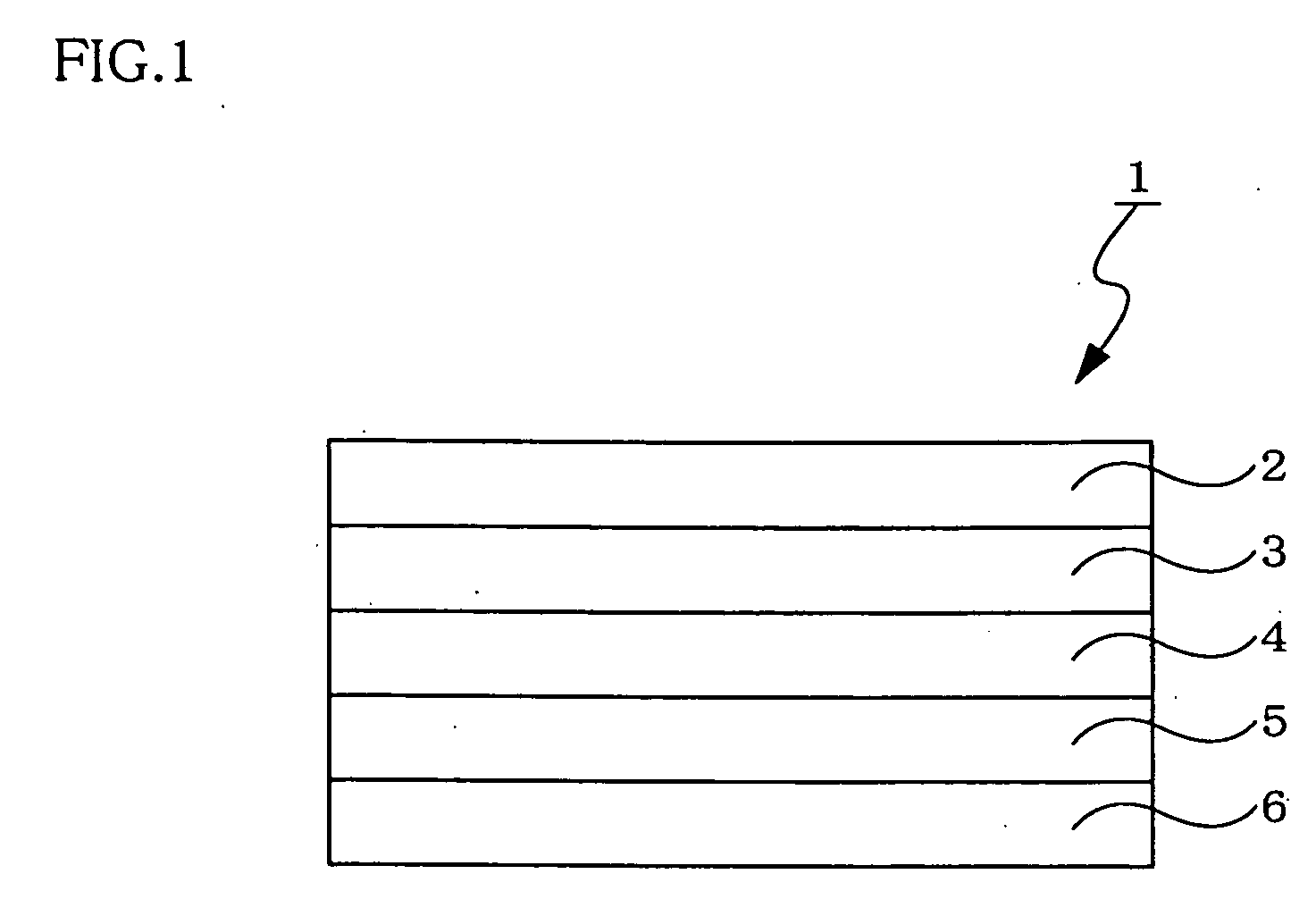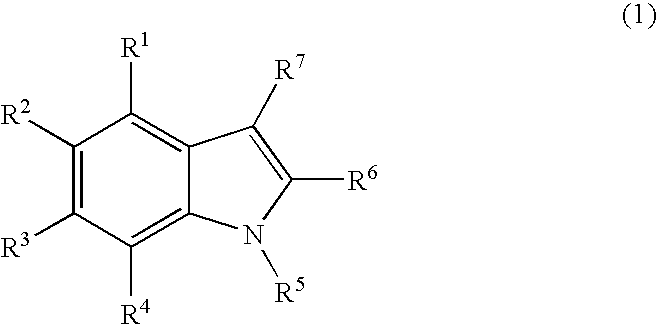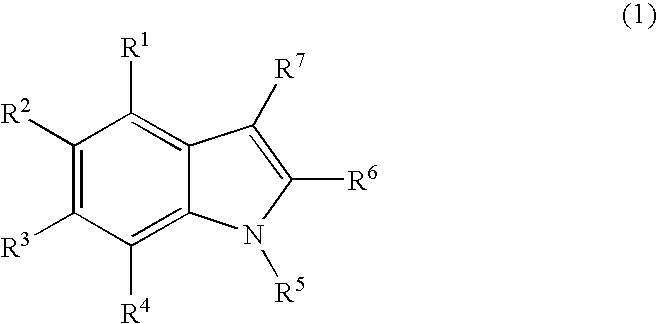Organic electroluminescence device
a technology of electroluminescent devices and organic materials, which is applied in the direction of discharge tube luminescnet screens, other domestic articles, natural mineral layered products, etc., can solve the problems of compound of patent document 1 not achieving satisfactory luminous efficiency, and achieve the effects of reducing different interactions between organic layers, high efficiency, and long li
- Summary
- Abstract
- Description
- Claims
- Application Information
AI Technical Summary
Benefits of technology
Problems solved by technology
Method used
Image
Examples
example 1
[0081] A glass substrate with an ITO transparent electrode (25 mm×75 mm×0.7 mm) was subjected to ultrasonic cleaning in isopropyl alcohol for five minutes and then subjected to UV ozone cleaning for 30 minutes. The cleaned glass substrate with the transparent electrode was installed in a substrate holder of a vacuum deposition device, and a TCTA film with a thickness of 95 nm was formed on the surface of the glass substrate on which the transparent electrode was formed so that the transparent electrode was covered with the TCTA film. The TCTA film functions as a hole transporting layer. The compound (A) was deposited on the TCTA film as a host compound to a thickness of 30 nm to form an emitting layer. The Ir metal complex compound (B) was added as a phosphorescent Ir metal complex dopant. The concentration of the metal complex compound (B) in the emitting layer was adjusted to 7.5 wt %. This film functions as an emitting layer. The compound (C) was formed on this film to a thicknes...
example 2
[0083] An organic EL device was fabricated in the same manner as in Example 1 except for using the compound (D) instead of the compound (B). After sealing the resulting device, electricity was supplied to the device in the same manner as in Example 1.
[0084] Blue green light with a luminance of 113 cd / m2 was obtained at a voltage of 5.5 V and a current density of 0.35 mA / cm2. The luminous efficiency was 32 cd / A. The device was driven at a constant current and an initial luminance of 200 cd / m2. The period of time until the luminance was halved to 100 cd / m2 was measured and found to be 730 hours.
example 3
[0085] An organic EL device was fabricated in the same manner as in Example 1 except for using the compound (E) instead of the compound (B). After sealing the resulting device, electricity was supplied to the device in the same manner as in Example 1.
[0086] Green light with a luminance of 108 cd / m2 was obtained at a voltage of 5.5 V and a current density of 0.14 mA / cm2. The luminous efficiency was 77 cd / A and 44 lm / W. The device was driven at a constant current and an initial luminance of 1500 cd / m2. The period of time until the luminance was halved to 750 cd / m2 was measured and found to be 3210 hours.
PUM
| Property | Measurement | Unit |
|---|---|---|
| singlet energy level | aaaaa | aaaaa |
| triplet energy level | aaaaa | aaaaa |
| triplet energy level | aaaaa | aaaaa |
Abstract
Description
Claims
Application Information
 Login to View More
Login to View More - R&D
- Intellectual Property
- Life Sciences
- Materials
- Tech Scout
- Unparalleled Data Quality
- Higher Quality Content
- 60% Fewer Hallucinations
Browse by: Latest US Patents, China's latest patents, Technical Efficacy Thesaurus, Application Domain, Technology Topic, Popular Technical Reports.
© 2025 PatSnap. All rights reserved.Legal|Privacy policy|Modern Slavery Act Transparency Statement|Sitemap|About US| Contact US: help@patsnap.com



